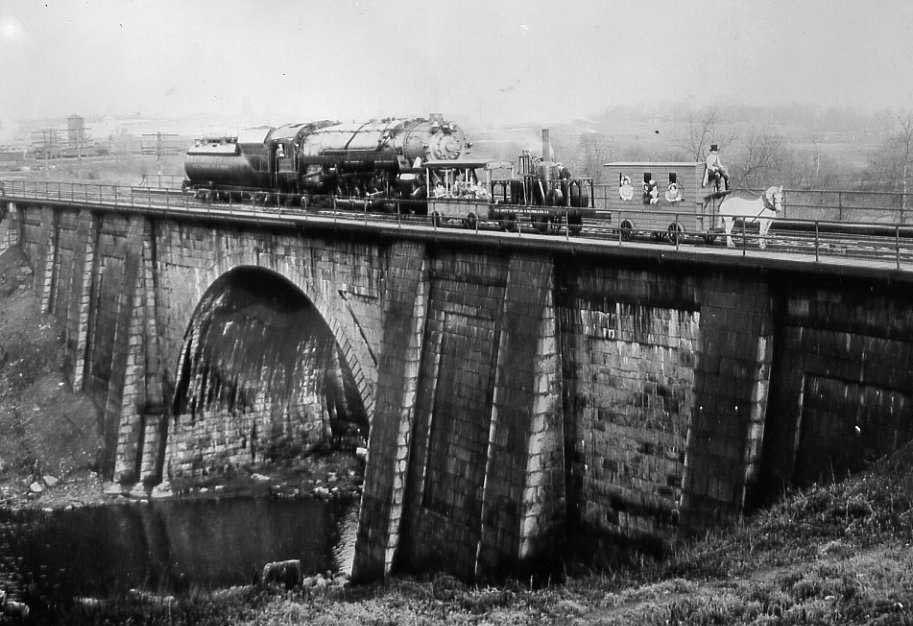
Photo credit:
Robert Vogel, Historic Photo
|
Carrollton Viaduct
Inventory No.:
B-21
Date Listed:
2/20/1972
Location:
Tracks over Gwynn's Falls south of Millington Avenue, Baltimore, Baltimore City
Category:
Structure
Period/Date of Construction:
1829
Architect/Builder:
Architect: James Lloyd
NHL Date:
11/11/1971
|
|
Description:
The Carrollton Viaduct is built of finely dressed ashlar masonry. The viaduct, measuring 297' in length, spans the stream with a full centered arch 80' in diameter and measuring 62' from the crown of the intrados to the bed of the stream. On either side of the arch are masonry walled approaches. The width of the viaduct is 26'-6" and the roadbed carries a double track and two 3' wooden walkways. Between the second and third buttresses along the west side is an arched passageway 16' wide through the viaduct to provide for a wagon road. Between the buttresses and in the spandrels on either side of the arch are shallow recessed stone panels which give the bridge a restrained severity reminiscent of the designs of Sir John Soane of Claude Nicholas Ledoux.
|
Significance:
Originally built to carry the tracks of the Baltimore & Ohio Railroad, the bridge has survived changes effected by modern technology. The viaduct is the first masonry railroad bridge constructed in the United States. It is constructed of dressed granite ashlar and spans the stream with a full center arch, 80' in diameter. Designed by James Lloyd and constructed by Caspar Wever, the viaduct has a severity of design and lack of ornament quite appropriate to its industrial use. This severity has also given it a timeless quality so that it does not appear surprising that it is still in daily use.
|
|